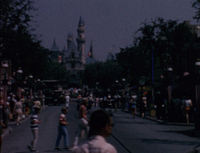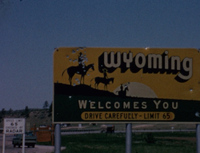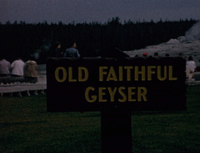What You See Is What You Get
While we may think of a personal home movie collection as something irrelevant to anyone outside of the family to whom the collection belongs, the longer we look, the more ways there are to read and interpret home movie footage. Much of the interpretative possibility is subjective, depending on your personal experience and interests as a viewer.
The “travel films” offer an array of footage within familiar and historical landmarks that people still visit in the present day. This may allow the viewer to conduct their own comparative analysis based on personal experience with the places shown in the movies. There are long shots of Disneyland and Universal Studios, for example, as well as a film dedicated to the family’s trip to Washington D.C. and New York City.
Viewing the clothing, the cars, and the architecture within familiar places can also help us to understand this moment in history from a more relatable standpoint than we might get from reading about the period in a book or watching a Hollywood produced reenactment of the period. For me, it was especially interesting to see the family visiting Yellowstone and the Grand Tetons where I have driven through on a cross-country road trip of my own.
Some of the bears encountered by the Marion family while at Yellowstone.
The family also passes through San Francisco and through the Avenue of the Giants in Northern California. Having lived in that area prior to moving to Bloomington, it was exciting and intriguing to see the places I have a deep familiarity with and that I hold countless memories of, portrayed in the family home movies. One thing that struck me was the presence of bears and wildlife in the footage! I could not believe one shot in which a group of bears came up to the family as they sat in the Cadillac during their trip through Yellowstone and the Tetons.
As you watch, are any of the places the family visits familiar to you? What kinds of memories emerge as you watch?
Another way to examine the home movies is what Roger Odin calls a “serial analysis”.3 In this approach, we can compare representations of the same theme or place from different periods. One example of this is seeing the difference in water levels of Lake Mead from 1965 to 2022. The picture below shows the clear difference in lake levels between the two periods, thus documenting the historic drought conditions of the region. The image to the left is what the Marion Family encountered while visiting the area, and the right side is from a recent PBS Newshour story on the lowering of Lake Mead water levels. What other serial analyzes could we make?






